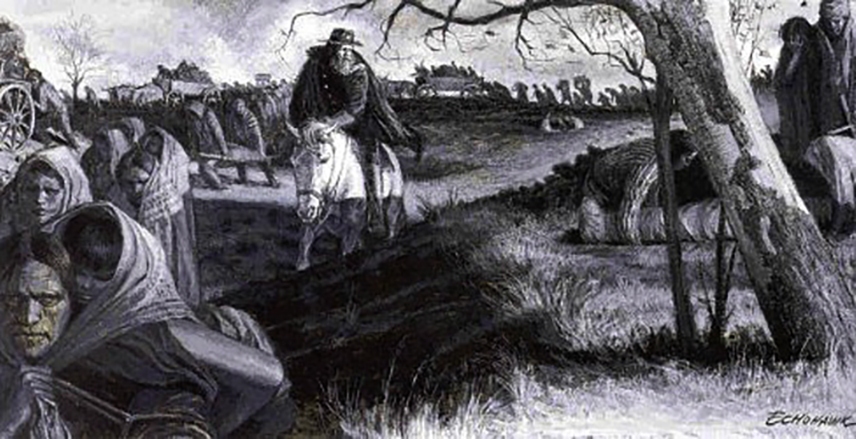
In the early 1800's the basic policy of the United States government regarding native Americans was to remove the Indian population from areas, or potential areas, of white settlement. The most thoroughly documented instance of this policy and its consequences is the removal of the Cherokee Indians from their homelands in the southeastern states of Tennessee, Alabama, North Carolina, and Georgia.
President Thomas Jefferson suggested in 1803, shortly after the purchase of the Louisiana Territory, that treaty arrangements be reached with the Cherokee and the other tribes of the southeast that would provide for removal of the Indians to new lands west of the Mississippi. Unexplored and deemed unsuitable for white settlement, these lands seemed perfectly suited for ridding the new nation of its Indian problem. Two such treaties were eventually negotiated and approximately one-third of the Cherokee population made the migration west by 1820. However, during the administrations of James Monroe and John Quincy Adams, the federal government adopted a more sympathetic policy towards the native tribes of the southeast, encouraging missionary efforts to "civilize" them, and recognizing more extensive rights of Indians over tribal lands. Missionary efforts among the Cherokee were particularly significant. Missions from a variety of Protestant denominations were established. Tribal schools were started as was a tribal newspaper written in both English and Cherokee. Some Cherokee children were brought north to be educated in private schools. And there were several marriages between Cherokee men and the daughters of church leaders. The ties thus established proved a powerful, albeit inadequate, source of political and moral leverage when the national debate over Indian removal reached a climax in the early 1830s.
Substantial conflict with the state government of Georgia developed as the federal government took the Cherokee side against encroachment by white settlers on Indian land. The discovery of gold in northern Georgia in 1828 and pressure for the availability of more land to settle the growing white population contributed to more local agitation for Indian removal. The governor and Georgia congressional delegation actively pressed the case for Indian removal and western expansion. State laws were enacted that effectively destroyed Cherokee self-government. And with the election of Andrew Jackson as President in 1828 the expansionists gained a sympathetic and powerful ear in Washington. Jacksonian Democrats prevailed by a single vote in Congress in 1830 with the passage of the Indian Removal Act and again when President Jackson ignored the Supreme Court decision written by Chief Justice Marshall in the case of Worchester vs. the State of Georgia that declared void Georgia's legal rights over the Cherokee. In 1835 the Treaty of New Echota was signed by a small party of Cherokee leaders forcing the tribe to cede their lands and remove to the West. Though there were several delays, the removal of the Cherokee from Georgia, Tennessee, North Carolina, and Alabama along what has come to be known as the Trail of Tears was completed by 1839.
image from Brummett Echohawk, The Trail of Tears, in the Gilcrease Museum, Tulsa, Oklahoma.
